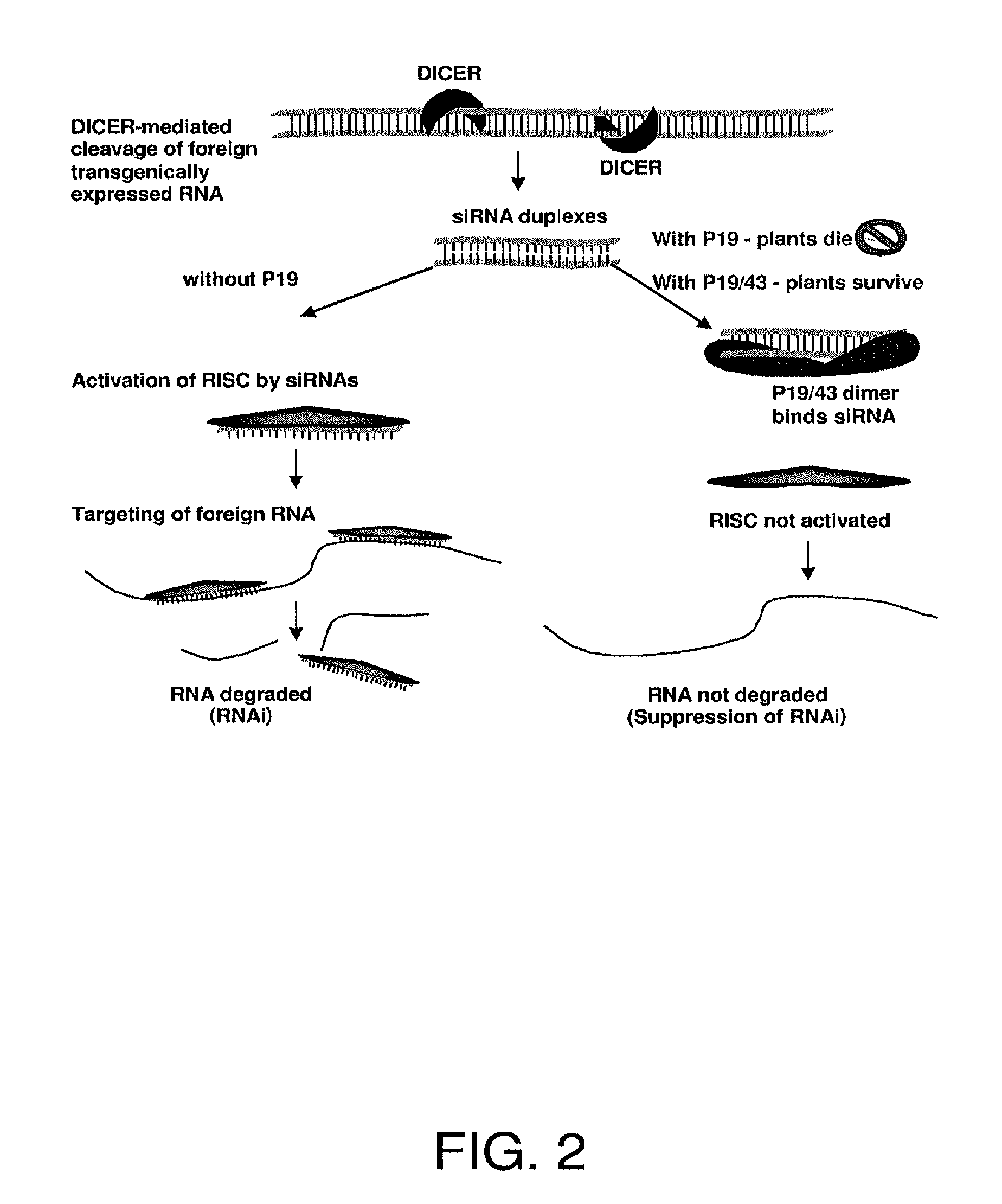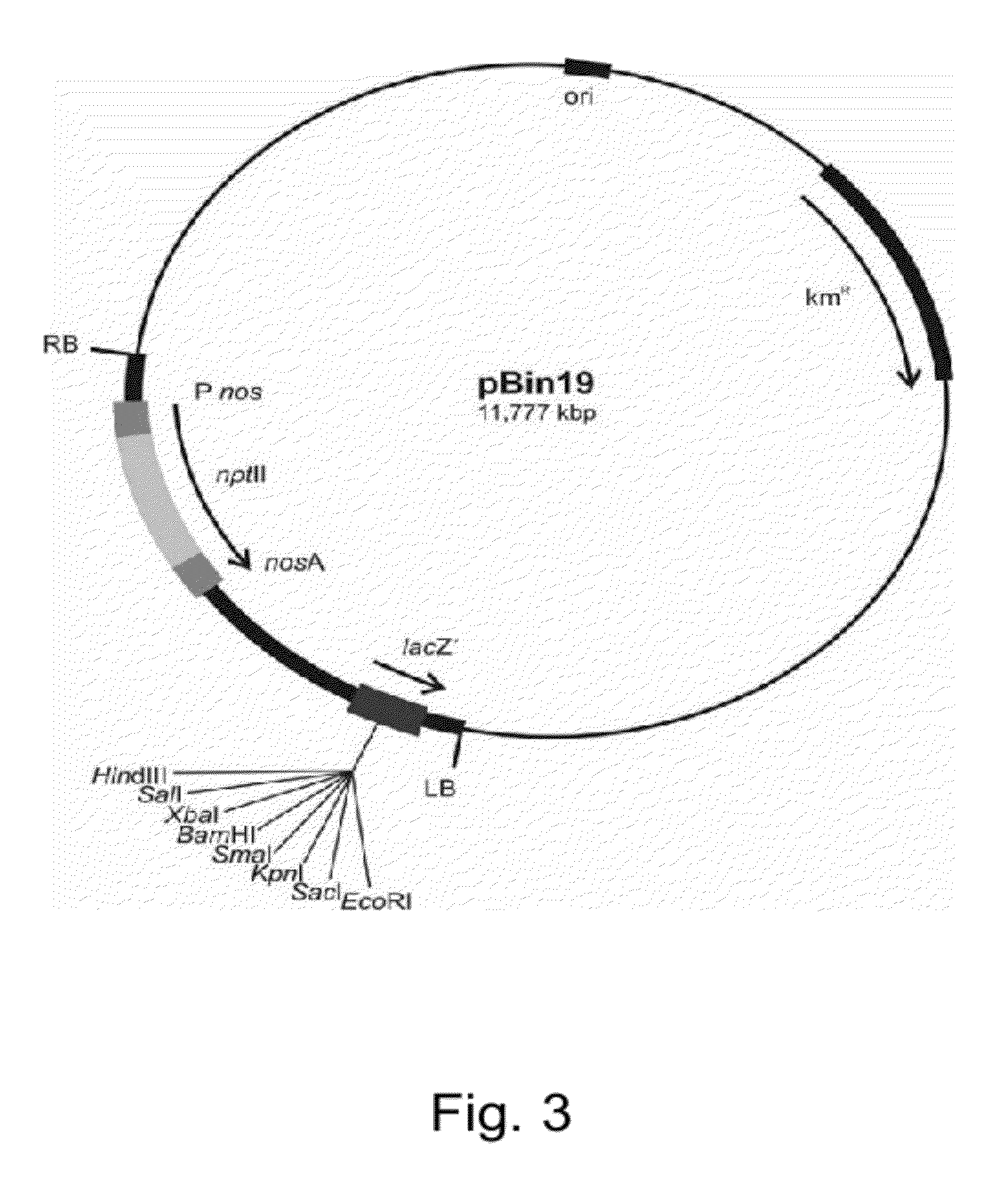Enhancing expression of value-added genes by transgenic expression of tombusvirus-based P19 gene mutants
a technology of p19 gene and transgenic expression, which is applied in the field of enhancing the expression of value-added genes by transgenic expression of p19 gene mutants, can solve the problems of limited ability to enhance transient expression (i.e., at the site of introduction in the plant part) of foreign genes, and the expression level of foreign genes is often suboptimal, so as to reduce the toxicity of eukaryotic cells, the effect of robust and readily applicable enhancers of foreign protein
- Summary
- Abstract
- Description
- Claims
- Application Information
AI Technical Summary
Benefits of technology
Problems solved by technology
Method used
Image
Examples
example
DpnI Mediated Site-Directed Mutagenesis PCR
[0038]A highly effective method for making site directed mutation on plasmids without subcloning, based on the work of Fisher and Pei20, is employed for producing p19 mutants. The procedure includes:
[0039](1.) Amplification of mutant DNA[0040](a) Combine
[0041]
DNA template250ng10x Pfu DNA polymerase buffer5μl10 Mm dNTP1μlMutagenesis Primer-F125ngMutagenesis Primer-R125ng[0042](b) Add ddH2O to 50 μl[0043](c) Add 1 μl PfuTurbo DNA polymerase (STRATAGENE Cat. No. 600250, 2.5 units)
[0044]
PCR conditions95° C.2min18 cycles of:95° C.1min55° C.1.5min68° C.min / kb to length of construct
[0045](2.) Degradation of methylated (parental) DNA with DpnI[0046](a) Cool down PCR product[0047](b) Add 1 μl DpnI to PCR product, incubate at 37° C. overnight
[0048](3) Transformation into E. coli [0049](a) Place 100 μl high efficiency (>1×108) competent cells XL-1-Blue on ice[0050](b) Add 1-5 μl of digested PCR product[0051](c) Incubate 30 min on ice[0052](d) 42° C. h...
PUM
| Property | Measurement | Unit |
|---|---|---|
| Capacitance | aaaaa | aaaaa |
| pH | aaaaa | aaaaa |
| volume | aaaaa | aaaaa |
Abstract
Description
Claims
Application Information
 Login to View More
Login to View More - R&D
- Intellectual Property
- Life Sciences
- Materials
- Tech Scout
- Unparalleled Data Quality
- Higher Quality Content
- 60% Fewer Hallucinations
Browse by: Latest US Patents, China's latest patents, Technical Efficacy Thesaurus, Application Domain, Technology Topic, Popular Technical Reports.
© 2025 PatSnap. All rights reserved.Legal|Privacy policy|Modern Slavery Act Transparency Statement|Sitemap|About US| Contact US: help@patsnap.com



